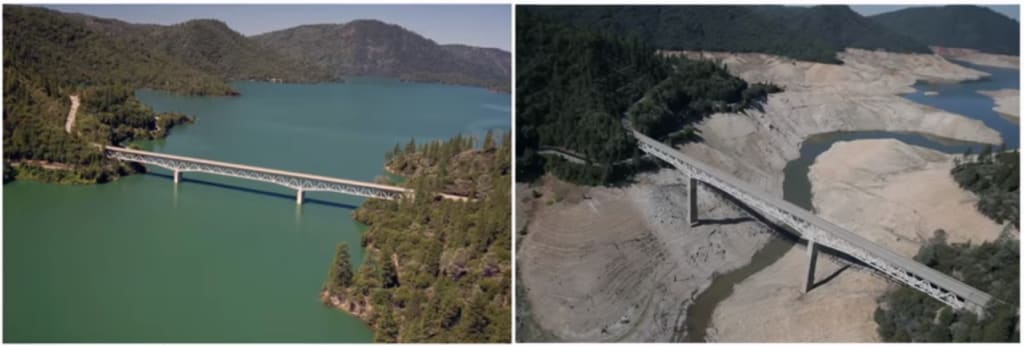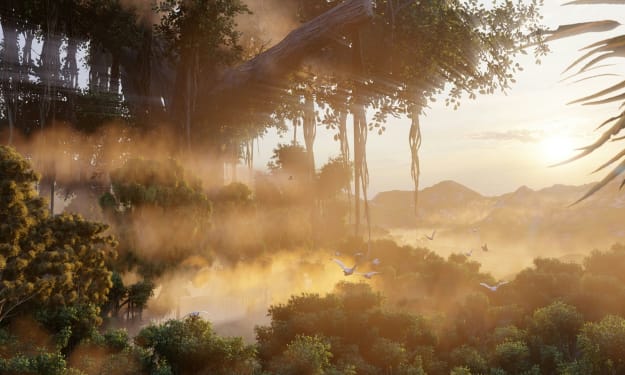Fifteen Dramatic Changes on Earth Revealed by NASA
"Fifteen Shocking Images That Reveal the Impact of Human Activities on Earth, According to NASA"

Human beings have been changing our planet for centuries, but the effects of these changes have become more pronounced in recent years. NASA has been documenting these changes through a series of photos that reveal how the Earth has transformed over the years. The time difference between some of these incredible images ranges from five to 100 years.
One of the most striking examples of this transformation can be seen in the Pettersen Glacier in Alaska. These photos date from the summer of 1917 to and summer of 2005. The glacier, which is located in Kenai Fjords National Park near Seward, has dramatically changed due to the changing climate. Over 88 years, no icebergs are visible anymore.
The disappearance of seas, rivers, and lakes is one of the brightest examples of environmental disasters caused by human beings. For example, the Aral Sea in Kazakhstan almost disappeared by 2014 due to the extensive irrigation of cotton fields. Two photos from August 2000 and August 2014 show the extent of this transformation.
Lake Oroville in California was hit hard by the lack of water in July 2010 and August 2016. While California was suffering from a severe drought, it's hard to believe we're looking at the same place. The photos show how the lake has reduced over time due to the long-term drought.
Bear Glacier in Alaska is melting very fast. The rise in temperature from 1950 to 1990 caused the giant Bear Glacier to retreat by one mile. From 2000 to 2005, it moved another two miles. In 2014, there was a massive flood that affected the local population.
Forests in Rondonia, Brazil, have been actively cut down since the 1960s. Two photos from June 1975 and August 2009 show the extent of this deforestation. According to current estimates, Amazon rainforests now have about 80 percent left. The state of Rondonia in Brazil lost most of its forests.
The Kardi Glacier in Alaska has melted away at an alarming rate. Two photos from July 1909 and August 2004 show the difference between them. Nine miles of the glacier melted away, and researchers suggest that the glacier melts about one mile per year on average.
The Mirani Dam in Pakistan has had a positive impact on the area. The dam supplies clean drinking water and power to the surrounding area and supports local agriculture. Two photos from August 1999 and June 2011 show the transformation this has brought about.
The Matterhorn Mountain in the Alps has seen a drastic reduction in snow cover in recent years. Two photos from August 1960 and August 2005 show the extent of this transformation.
The Taku Glacier in Alaska, named after one of the slopes, covers a large territory, but unfortunately, like many other glaciers on our planet, it is melting fast. Comparing the two photos from June 1909 and September 2000, you can see that there was less snow in 2000.
The Great Man-Made River in Libya is the greatest engineering project in the world. It is a network of pipes, aqueducts, and wells that cover more than 310 miles. The water system provides a desert area with water and has had a positive impact.
The Cory Collis Glacier in Peru is another example of how global warming is affecting our planet. Two photos from July 1978 and July 2011 show the transformation of this tropical glacier located in the Andes Mountains of Peru.
The March Ikeda Lake in Argentina, the biggest salt lake in South America, has become smaller in recent years. Two photos from July 1998 and September 2011 show the extent of this transformation.
Lastly, the Maria Glacier in Alaska has undergone a significant transformation due to global warming. The photos from August 1941 and August 2004 show how the place is covered by trees and grass nowadays, with almost no snow.
NASA's photos reveal how human activities have dramatically changed the planet over the years. These transformations should serve as a wake-up call for all of us to take action to protect our planet for future generations.
About the Creator
Abdul Hannan Saif
Blogger | Writer | Explorer | wish to inspire, inform and help others to see fascinating discoveries and live a fulfilled life!






Comments
There are no comments for this story
Be the first to respond and start the conversation.